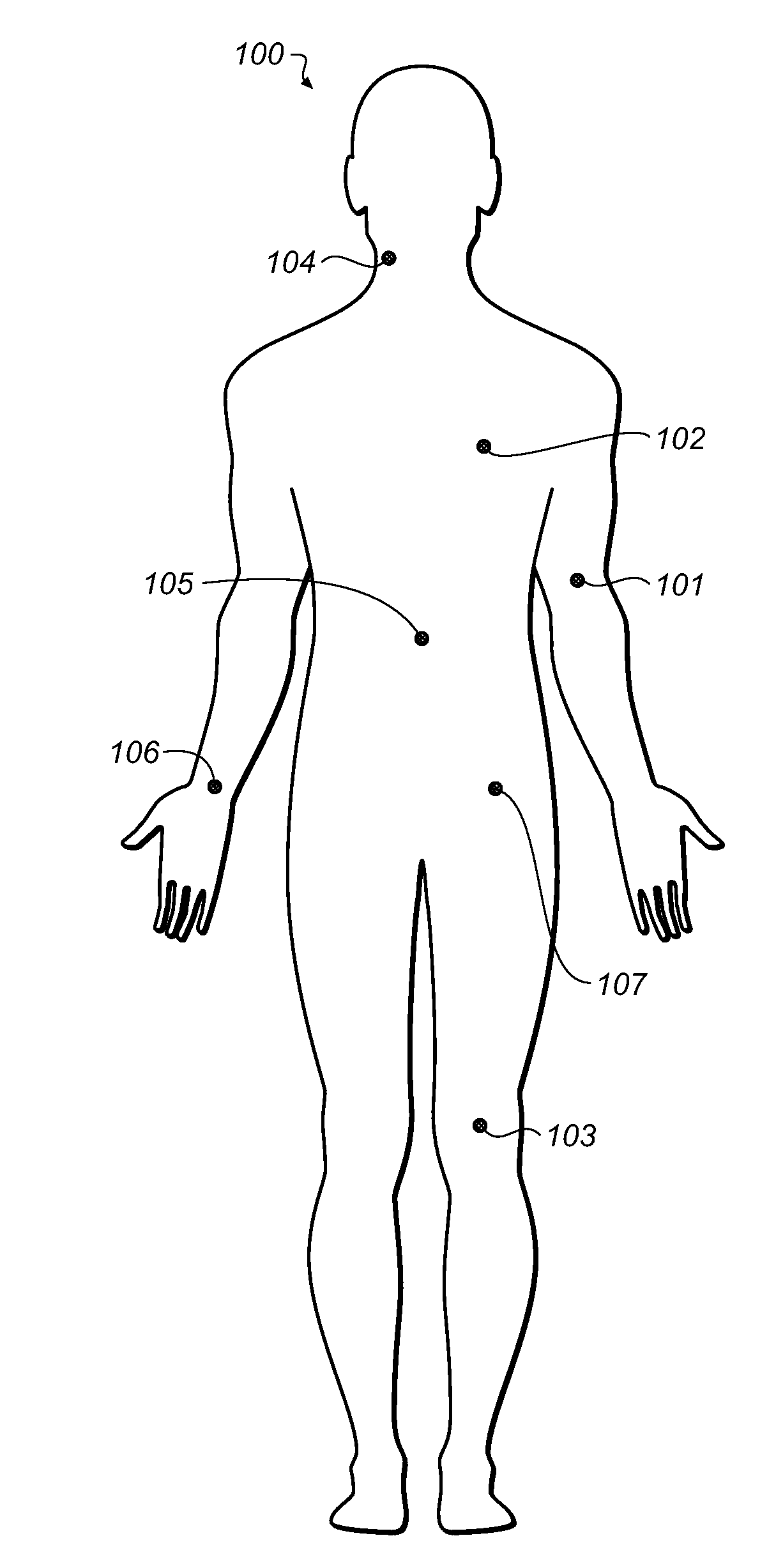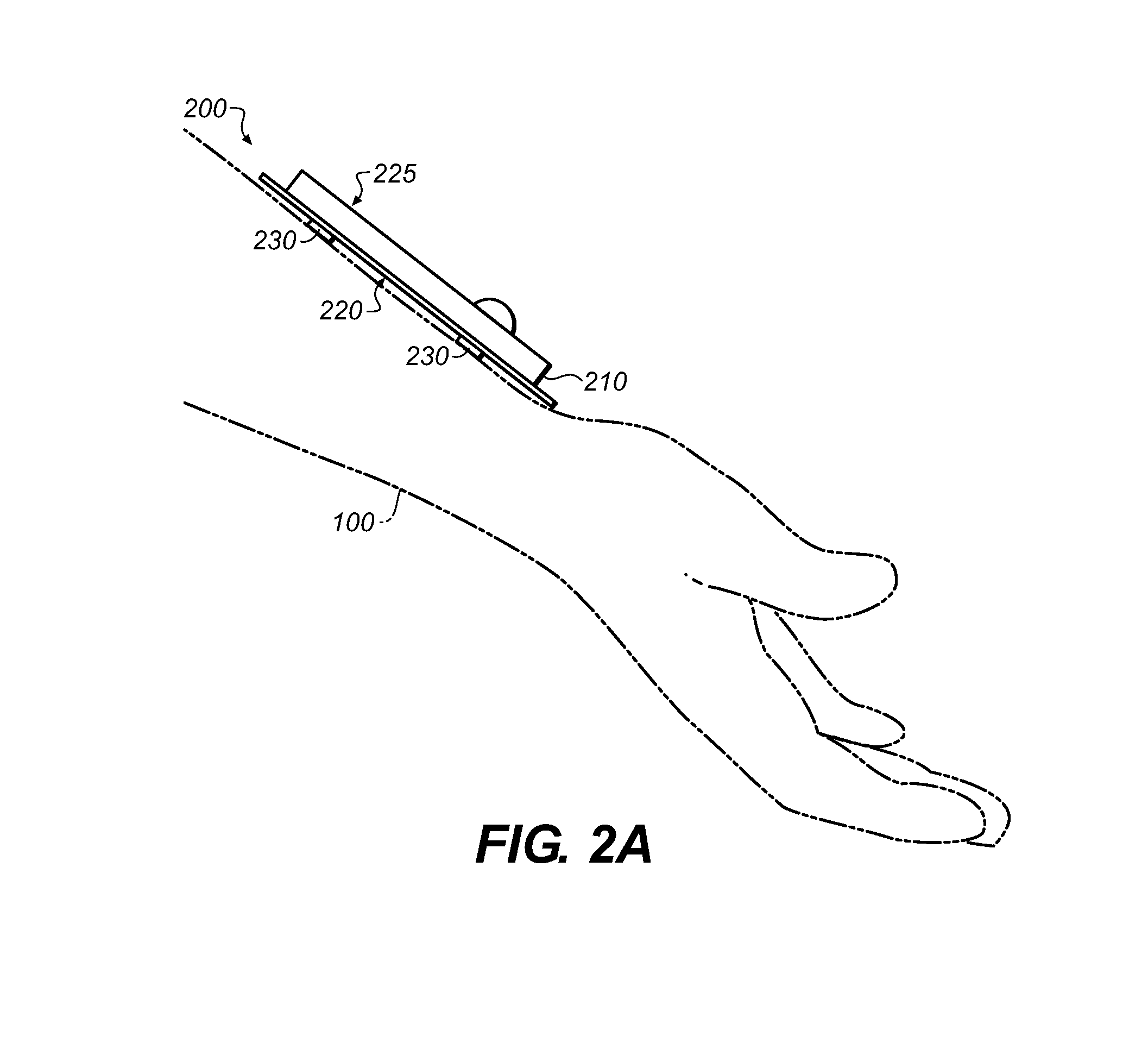Methods, systems, and devices for optimal positioning of sensors
a sensor and optimal positioning technology, applied in the field of electronic systems, can solve the problems of misapplied sensor, sensor positioning is not accurate for patients, sensor spacing is significantly different from what was intended for the sensor, etc., to achieve the effect of improving the feedback regarding sensor positioning
- Summary
- Abstract
- Description
- Claims
- Application Information
AI Technical Summary
Benefits of technology
Problems solved by technology
Method used
Image
Examples
Embodiment Construction
[0037]The following detailed description should be read with reference to the drawings, in which like elements in different drawings are identically numbered. The drawings, which are not necessarily to scale, depict selected embodiments and are not intended to limit the scope of the invention or the attached claims.
[0038]As used herein, the terms “about” or “approximately” for any numerical values or ranges indicate a suitable dimensional tolerance that allows the part or collection of components to function for its intended purpose as described herein. More specifically, “about” or “approximately” may refer to the range of values not at least ±10% of the recited value, e.g. “about 90%” may refer to the range of values from 81% to 99%. As used herein, the phrase “electrical signal” or “signal” is intended to include direct current signals, alternating signals, or any signal within the electromagnetic spectrum. The terms “processor,”“microprocessor,” and “microcontroller” are intende...
PUM
 Login to View More
Login to View More Abstract
Description
Claims
Application Information
 Login to View More
Login to View More - R&D
- Intellectual Property
- Life Sciences
- Materials
- Tech Scout
- Unparalleled Data Quality
- Higher Quality Content
- 60% Fewer Hallucinations
Browse by: Latest US Patents, China's latest patents, Technical Efficacy Thesaurus, Application Domain, Technology Topic, Popular Technical Reports.
© 2025 PatSnap. All rights reserved.Legal|Privacy policy|Modern Slavery Act Transparency Statement|Sitemap|About US| Contact US: help@patsnap.com



